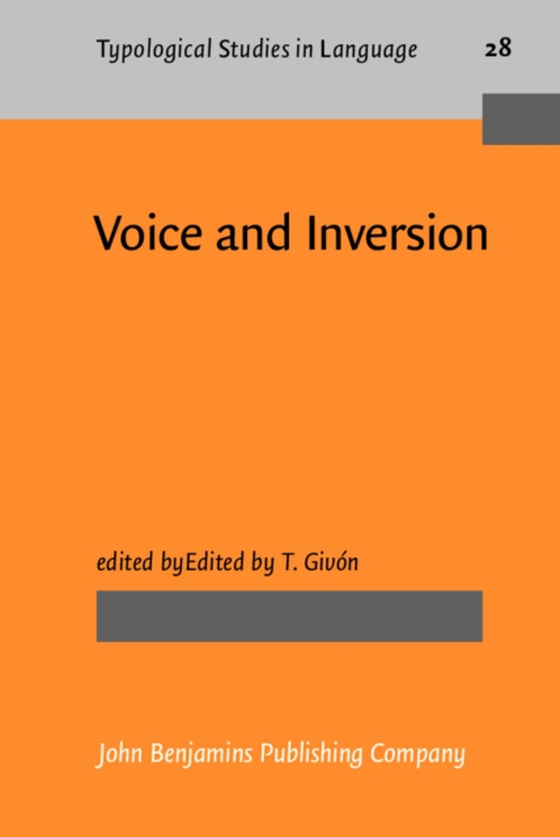
Voice and Inversion e-bog
1094,57 DKK
(inkl. moms 1368,21 DKK)
This collection aims first to establish a structure-independent, language-independent definition of pragmatic voice, and more specifically then a universal functional definition of “inverse”. The grammar and pragmatic function of the four major voice constructions — direct-active, inverse, passive, antipassive — are surveyed using narrative texts from 14 languages: Koyuk...
E-bog
1094,57 DKK
Udgivet
30 maj 1994
Længde
410 sider
Genrer
Linguistics
Sprog
English
Format
pdf
Beskyttelse
LCP
ISBN
9789027276551
This collection aims first to establish a structure-independent, language-independent definition of pragmatic voice, and more specifically then a universal functional definition of “inverse”. The grammar and pragmatic function of the four major voice constructions — direct-active, inverse, passive, antipassive — are surveyed using narrative texts from 14 languages: Koyukon (Athabascan), Plains Cree (Algonquian), Chepang (Tibeto-Burman), Squamish and Bella Coola (Salish), Sahaptin (Sahaptian), Kutenai (isolate), Surinam Carib (Carib), Spanish and Greek (Indo-European), Korean, Maasai (Nilotic), Cebuano and Karao (Philippine). The comparative quantified study of pragmatic voice functions tests the validity of a universal functional definition of voice and in particular of “inverse”. The cross-language comparison of grammatical structures that code the various voice functions then lays down the foundation for a non-trivial cross-language typology of “inverse”.
 Dansk
Dansk

